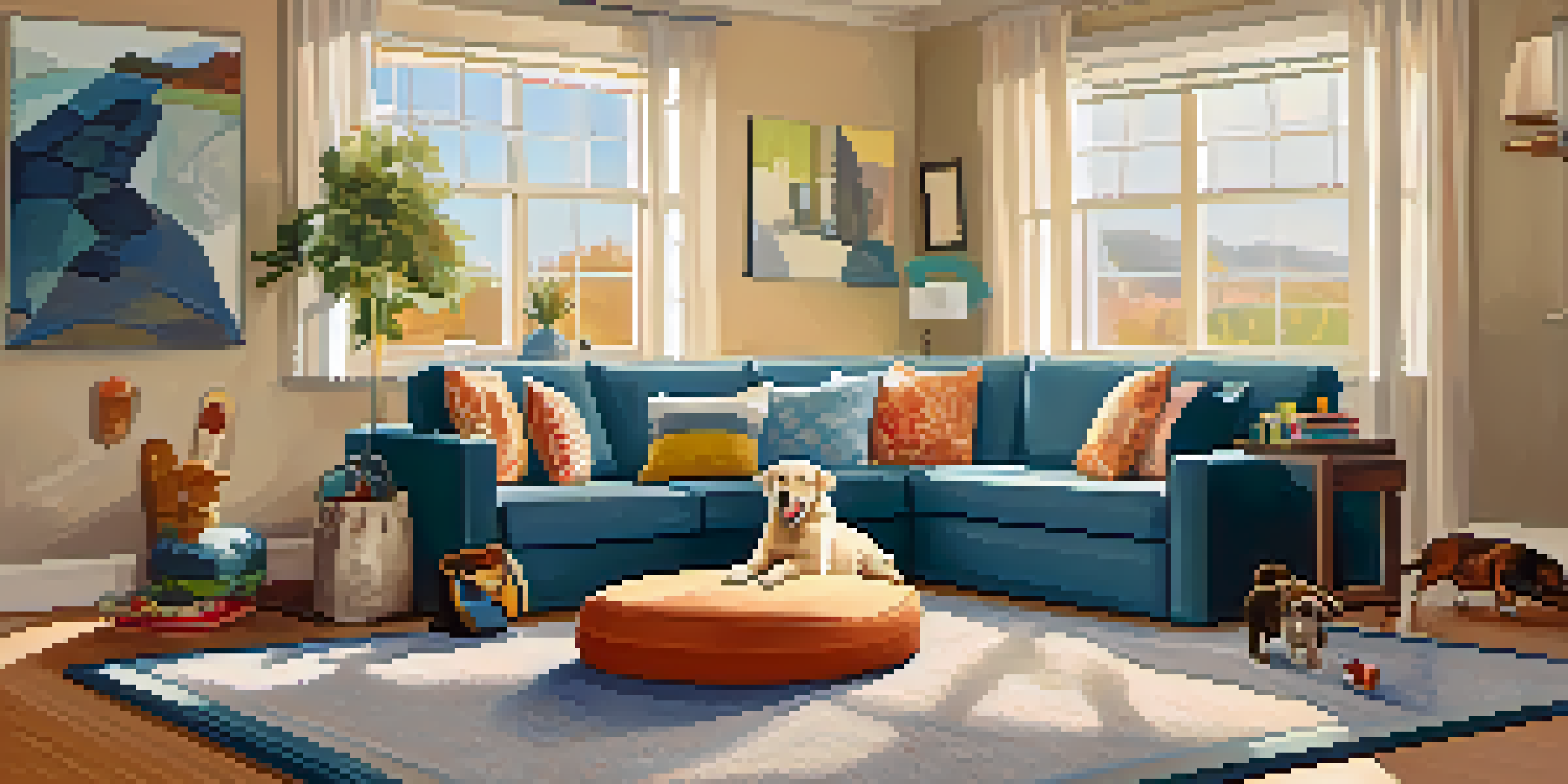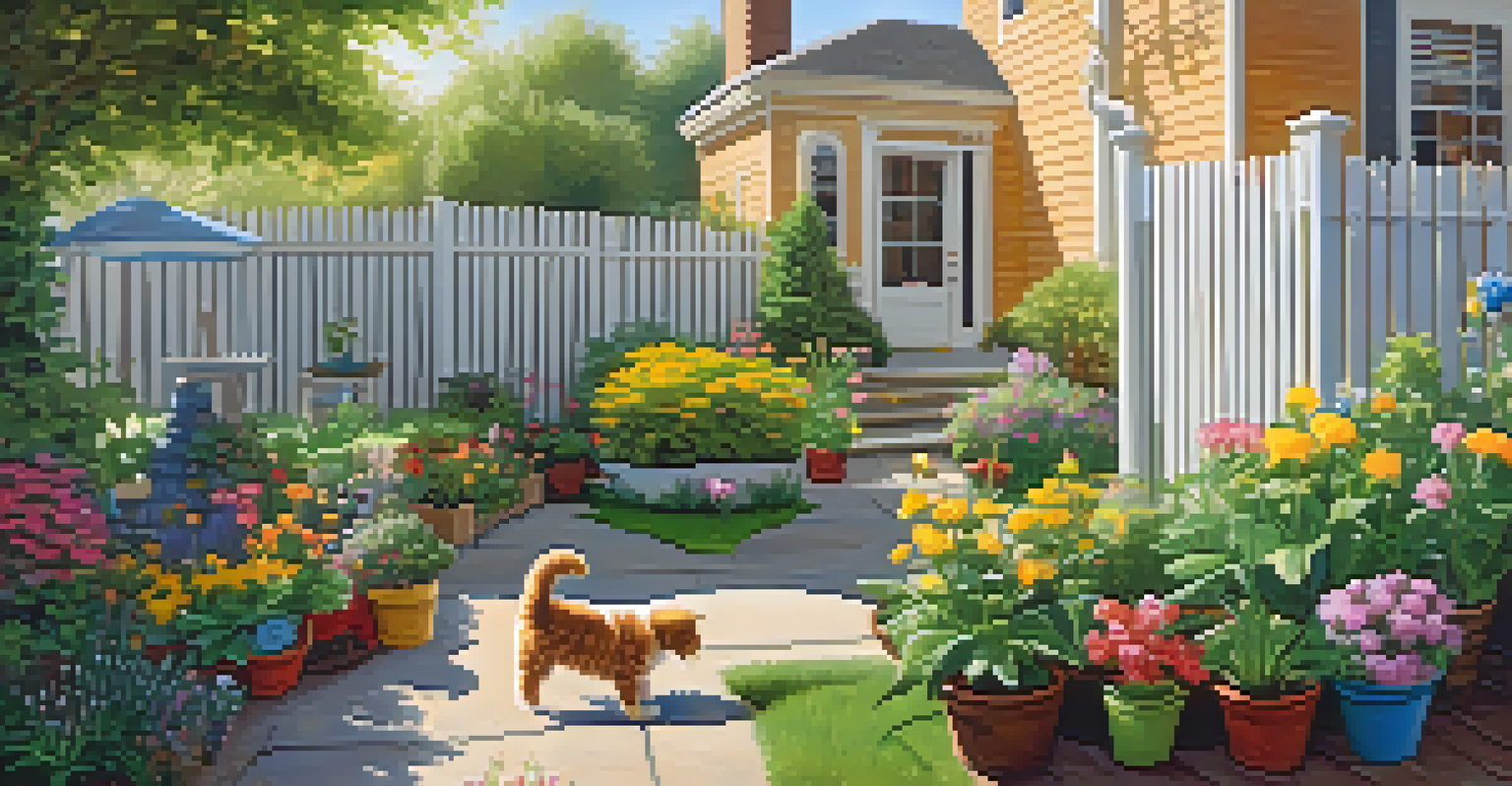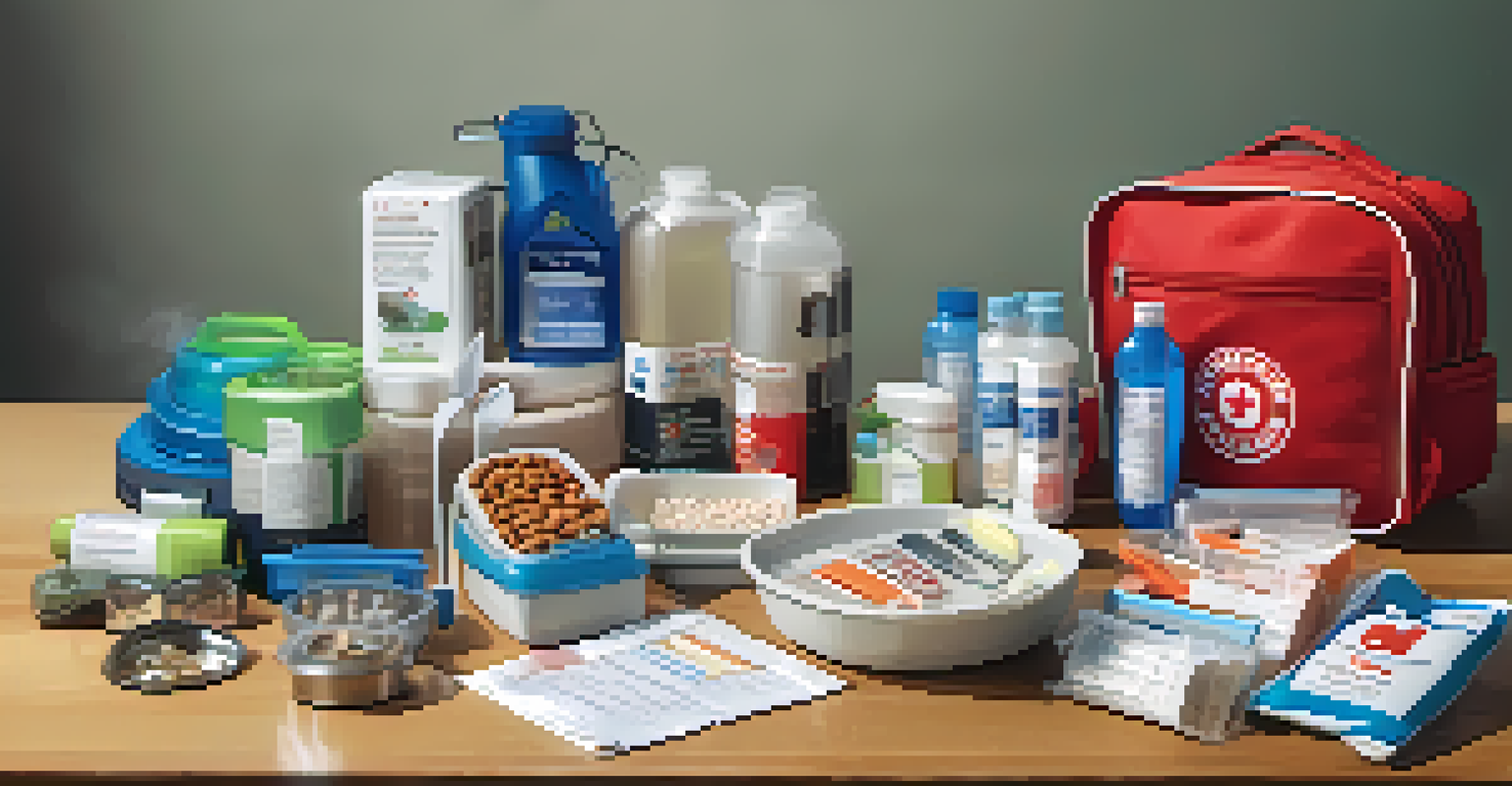Pet Safety: Creating a Secure Environment at Home

Understanding the Importance of Pet Safety at Home
Ensuring pet safety at home is crucial for your furry friends' well-being. Just like childproofing a house, a pet-safe environment can prevent accidents and injuries. Pets, driven by curiosity and instinct, can often get into trouble without proper precautions.
The greatness of a nation and its moral progress can be judged by the way its animals are treated.
Creating a secure environment benefits not only your pets but also provides peace of mind for you as an owner. Imagine the relief of knowing your pet can roam freely without the risk of harm. This sense of security fosters a loving and trusting relationship between you and your pet.
Ultimately, a safe home enhances your pet's overall happiness and health. By understanding the importance of safety measures, you're taking the first step towards a nurturing atmosphere for your beloved companions.
Identifying Common Household Hazards for Pets
Household items that seem harmless to us can pose significant dangers to pets. From common cleaning supplies to certain plants, many everyday objects can be toxic or hazardous. For instance, chocolate and grapes are well-known dangers for dogs, while some houseplants like lilies can be toxic to cats.

It's essential to recognize these hazards and remove or secure them accordingly. Consider keeping cleaning products in locked cabinets or using pet-safe alternatives. This simple act of vigilance can make a huge difference in your pet's safety.
Ensure a Safe Home for Pets
Creating a pet-safe environment is essential for preventing accidents and fostering a loving relationship with your furry friends.
Regularly assessing your home for potential hazards ensures that you stay one step ahead. By identifying and addressing these risks, you create a safer environment where your pets can explore without fear.
Pet-Proofing Your Living Space: Tips and Tricks
Pet-proofing your home is akin to setting up a safe play area for a toddler. Start by securing any loose wires, as chewing on electrical cords can lead to severe injuries. Using cord holders or protective covers can help eliminate this risk.
An ounce of prevention is worth a pound of cure.
Next, consider the layout of your furniture and belongings. Ensure that heavy items are placed securely out of reach, as a curious pet may inadvertently knock them over. Creating designated pet zones can also help minimize accidents.
Lastly, utilize gates to restrict access to certain areas, like kitchens or stairways. This not only protects your pets but also helps you maintain a tidy environment free from potential hazards.
Creating a Safe Outdoor Environment for Pets
Outdoor safety is just as important as indoor security. If you have a yard, ensure it's securely fenced to prevent your pets from wandering off. Regularly inspect the fence for any gaps or loose areas that could pose an escape risk.
Additionally, be mindful of plants in your garden. Many ornamental plants can be toxic to pets, so it's wise to research pet-friendly options. Creating a designated play area with safe toys can also enhance their outdoor experience.
Identify Household Hazards
Recognizing and securing common household hazards can significantly reduce the risk of harm to your pets.
Remember that outdoor environments can introduce other risks, such as wildlife encounters or harmful insects. Supervision during outdoor playtime can help mitigate these risks and provide a safe space for your pets to enjoy.
Ensuring Safe Storage of Food and Medications
Proper food and medication storage is a critical aspect of pet safety. Ensure that all human food is stored securely to prevent accidental ingestion. Items like chocolate, avocados, and certain nuts can be highly toxic for pets.
Similarly, medications should be kept out of reach. Even common over-the-counter drugs can be dangerous if ingested by pets. Consider using child-proof containers or designated pet-safe cabinets to safeguard these items.
Regularly reviewing your pantry and medicine cabinet can help you stay organized and aware of potential risks. By taking these precautions, you're creating a proactive approach to keeping your pets safe from harm.
The Role of Training in Pet Safety
Training plays a vital role in ensuring your pet's safety at home. Basic commands like 'sit,' 'stay,' and 'leave it' can prevent dangerous situations from arising. Teaching these commands not only keeps your pet out of harm's way but also enhances your bond.
Consider enrolling your pet in training classes or seeking guidance from a professional trainer. They can provide valuable insights and techniques tailored to your pet's needs. Consistency in training helps reinforce good behavior and increases your pet's overall safety.
Emergency Preparedness is Key
Having an emergency plan and kit for your pets can ensure their safety during unexpected situations.
Remember, training is an ongoing process. Regular practice and positive reinforcement can ensure that your pet remains responsive to commands, making your home a safer place for everyone.
Emergency Preparedness for Pet Safety
Being prepared for emergencies is crucial for pet safety. Natural disasters, accidents, or sudden health issues can arise unexpectedly, and having a plan in place can save lives. Start by creating an emergency kit that includes food, water, medications, and a first-aid kit for your pet.
Additionally, familiarize yourself with local veterinary services and emergency clinics. Keep a list of their contact numbers handy in case of emergencies. Knowing where to go can save valuable time during a crisis.

Finally, practice emergency drills with your pets. Ensuring they are familiar with the process can make a significant difference when it matters most. With the right preparation, you can navigate any situation with confidence.